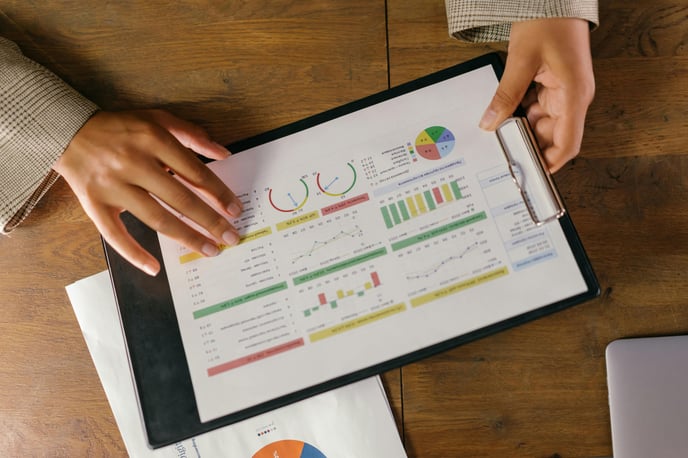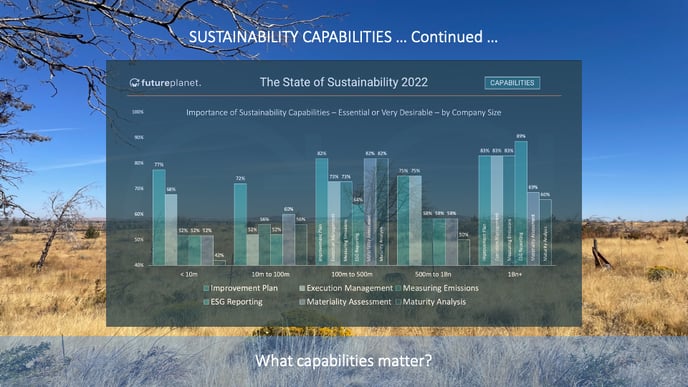
Double Materiality Assessments: Why they’re vital to business sustainability
The History and Importance of Double Materiality Assessments:
A Guide for Future-Focused Businesses
In an era where sustainability and corporate transparency are no longer optional, double materiality assessments have emerged as a cornerstone for responsible business practices. Understanding their evolution and role is essential for businesses aiming to align with global Environmental, Social, and Governance (ESG) standards and regulations.
Understanding Double Materiality
What is Double Materiality?
Double materiality expands traditional financial materiality by considering two dimensions:
- Financial Materiality: How sustainability issues impact a company’s financial performance.
- Environmental and Social Materiality: How a company’s operations affect the environment and society.
This approach, pioneered by the European Union, ensures businesses assess and report both inward and outward ESG impacts.
Origins and evolution of Double Materiality
The concept first gained prominence in 2019 through the EU’s Non-Financial Reporting Directive (NFRD). Its successor, the Corporate Sustainability Reporting Directive (CSRD), institutionalised double materiality by 2024, making it mandatory for companies under its scope.
This dual perspective aligns with the EU’s Green Deal, supporting the transition to a sustainable economy and bolstering transparency in corporate ESG practices.
Why Double Materiality matters for businesses
Double materiality isn’t just a regulatory requirement—it’s a framework for building resilience and fostering trust.
Strengthening risk management
By evaluating both financial and non-financial risks, businesses can identify vulnerabilities, such as climate-related risks or supply chain disruptions, enabling proactive mitigation strategies.
Enhancing stakeholder trust
Transparent reporting on environmental and social impacts demonstrates a commitment to accountability, strengthening relationships with investors, customers, and regulators.
Driving long-term value creation
Double materiality assessments provide insights for sustainable innovation, ensuring long-term profitability while addressing societal expectations.
Implementing Double Materiality Assessments
Adopting a double materiality approach requires strategic planning and robust tools.
Steps to conduct an assessment
- Stakeholder Engagement: Identify key stakeholders, including employees, investors, customers, and community members, to understand their expectations.
- Identify Material Issues: Map out ESG factors relevant to your business and industry.
- Data Collection: Use surveys, audits, and real-time data tracking to gather comprehensive insights.
- Impact Analysis: Evaluate both financial and non-financial impacts of identified issues.
- Prioritise and Report: Rank issues based on significance and integrate findings into your sustainability reports.
The role of Future Planet’s software in Double Materiality
Future Planet’s innovative platform simplifies the double materiality process.
Future Planet offers a clear, insight-driven approach to develop the right sustainability strategy for your business by guiding your Double Materiality Assessment (DMA). Identify and prioritise the key topics relevant to your industry, drive operational transformation and positive impact for your organisation, while ensuring compliance with ESG standards.
Key benefits include:
- Complete Double Materiality Assessment (DMA)
- Instant sector preview of material topics
- Automated stakeholder mapping and analysis
- Uncover impacts, risks, and opportunities (IROs)
- Targeted prioritisation of material topics
- Meet CSRD regulatory compliance
With Future Planet, businesses can efficiently conduct assessments, enhance ESG reporting, and meet regulatory requirements.
Frequently Asked Questions
Is Double Materiality mandatory?
Under CSRD, double materiality assessments are mandatory for companies meeting certain thresholds. This includes large EU-based companies and non-EU companies with significant EU operations.
How long does a Double Materiality Assessment take?
The timeline depends on company size and complexity. With tools like Future Planet, businesses can streamline the process and complete assessments more efficiently.
What frameworks support Double Materiality?
Standards like GRI, the European Sustainability Reporting Standards (ESRS), and the Task Force on Climate-Related Financial Disclosures (TCFD) provide guidelines for double materiality reporting.
Conclusion
Double materiality assessments are not just a compliance tool but a catalyst for sustainable growth. By evaluating both financial and societal impacts, businesses can build resilience, foster stakeholder trust, and unlock long-term value.
Future Planet's platform accelerates ESG performance. From DMA to CSRD, to carbon accounting and transition planning. It is a core business asset, a central hub for collaboration and the single source for all ESG data, replacing spreadsheets with accurate tracking and reporting to enable CSRD compliance.
To future-proof your business and embrace the principles of double materiality, contact Future Planet today.


